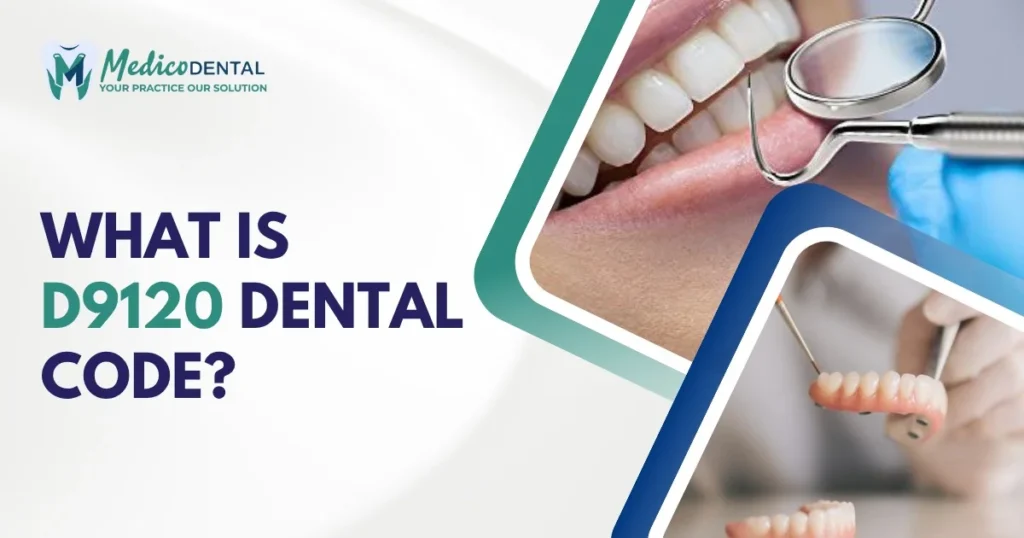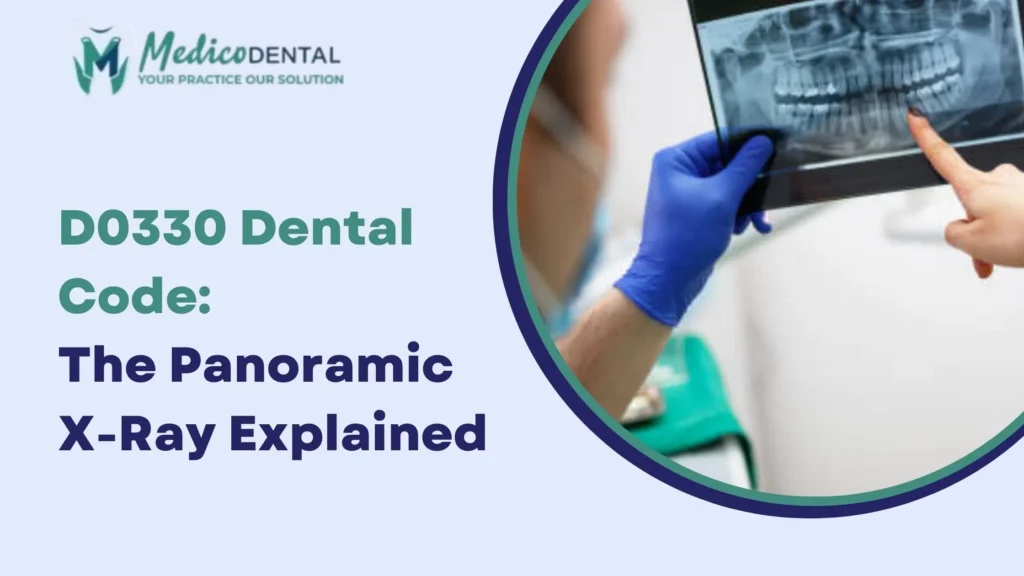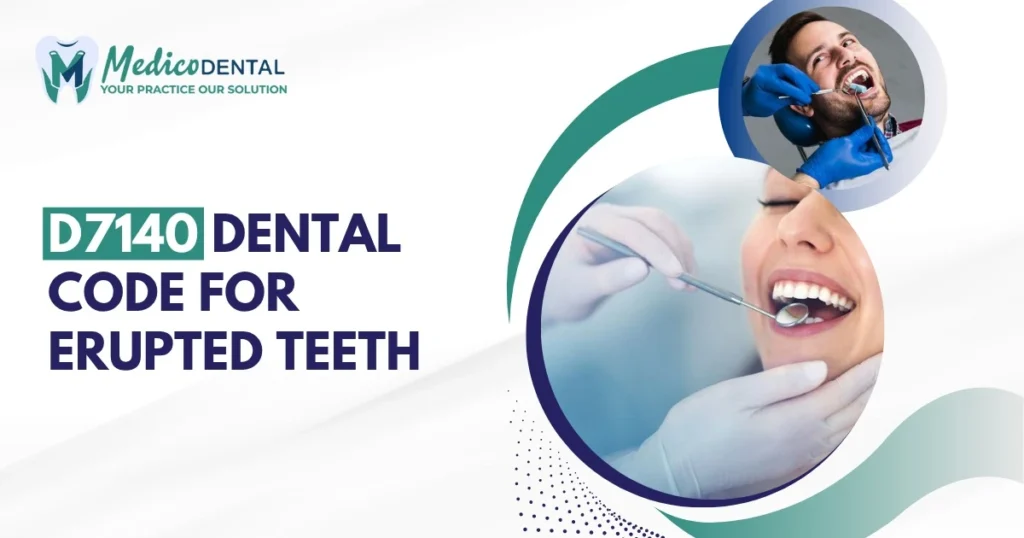When it comes to dental procedures, codes like D9120 are used to ensure that specific services are documented and billed correctly. The D9120 Dental Code is a specific code used for fixed partial denture sectioning, a procedure that helps dental professionals address issues such as decay, fracture, or the need for access to underlying dental work. In this article, we will dive deep into the meaning of this code, how it’s used in various dental scenarios, and the procedure involved.
Overview of the D9120 Code
The D9120 Dental Code is used to describe the procedure of sectioning a fixed partial denture (commonly known as a bridge). This code specifically refers to the act of removing a portion of a dental bridge, often for reasons such as decay, damage, or to provide access to the teeth underneath the bridge for additional treatment. It’s important to note that this procedure doesn’t involve the removal of the entire bridge, but rather a part of it—like a pontic (artificial tooth) or an abutment (supporting tooth).
Explanation of its Purpose in Dental Procedures
This code helps dental professionals document and bill for procedures where a section of a fixed partial denture needs to be removed. Whether it’s due to a decaying pontic, a fractured abutment, or the need to access the underlying tooth for a treatment like root canal therapy, D9120 is the recognized code for these specialized bridge sectioning procedures. It ensures that the work is accurately recorded and processed for reimbursement or insurance claims.
When is the D9120 Dental Code Used?
Common Scenarios Where D9120 Applies
The D9120 code is typically used in cases where a fixed partial denture (or bridge) is no longer serving its intended function or needs modification. Some common scenarios for its use include:
Damage or Decay: If part of the bridge (especially a pontic or abutment) becomes damaged or decayed, sectioning may be necessary to remove that portion while preserving the rest of the bridge.
Access for Underlying Treatment: In some cases, a dentist may need to access the tooth under a bridge for further treatment, like filling a cavity or performing a root canal. Sectioning the bridge allows the dentist to treat the tooth while keeping the rest of the dental work intact.
Partial Removal: Sometimes, a section of the bridge may need to be removed for reasons such as aesthetic issues, function restoration, or preparation for a new restoration.
Example Cases Like Removal of Pontics, Sectioning for Treatment Access, etc.
Here are a few real life examples of when the D9120 code might be used:
Removal of a Pontic: If a bridge has a pontic that has become damaged or infected, the dentist may use D9120 to remove just the pontic while preserving the abutment teeth.
Sectioning to Access an Underlying Tooth: For patients requiring treatment like a filling or root canal therapy on a tooth beneath the bridge, the dentist may section the bridge to access the tooth without having to remove the entire structure.
Replacing a Damaged Abutment: If one of the supporting teeth (abutments) of the bridge becomes weak or damaged, sectioning the bridge allows the dentist to remove the abutment and treat it without disrupting the rest of the bridge.
The Procedure for D9120 – Fixed Partial Denture Sectioning
Step by Step Explanation of the Procedure
The process of sectioning a fixed partial denture using the D9120 code involves several key steps, typically performed under local anesthesia. Here’s a general overview of how the procedure might unfold:
Initial Evaluation
The dentist will examine the bridge and the underlying teeth to assess the situation and determine if sectioning is the best course of action. This might involve taking X rays or performing a clinical exam to identify any damage or decay.
Anesthesia and Preparation
To ensure the patient is comfortable, local anesthesia is administered to numb the area around the bridge. The patient should feel little to no discomfort during the procedure.
Sectioning the Bridge
Using specialized dental tools, the dentist carefully removes the affected portion of the bridge. This could involve cutting through the material of the pontic or abutment to remove the portion that needs treatment or replacement.
Treatment of the Underlying Tooth (if necessary)
Once the bridge section is removed, the dentist can perform any necessary procedures on the underlying tooth, such as a filling or root canal treatment.
Replacement or Repair
After the underlying tooth has been treated, the dentist may place a new restoration, such as a temporary or permanent crown, or may restore the bridge if possible.
Final Adjustments
Once the procedure is complete, the dentist will check the fit and functionality of the remaining bridge. Any adjustments are made to ensure comfort and proper alignment.
Techniques Used by Dental Professionals
Dentists use a variety of techniques when performing fixed partial denture sectioning, depending on the specific case. They may use:
- Diamond burs or carbide burs for cutting through dental material
- High speed dental drills for precision work
- Rotary instruments to remove sections of the bridge
The key is precision. Dentists must carefully section only the necessary part of the bridge to avoid damage to the remaining structure, ensuring a smooth and effective procedure.
Billing and Reimbursement for D9120
How D9120 is Billed in Dental Offices
The D9120 Dental Code is billed in dental offices as part of the overall treatment plan when a portion of a fixed partial denture (bridge) needs to be sectioned. This procedure typically involves several steps, and dental billing will include the code for the specific sectioning as well as any other services performed during the visit, such as anesthesia, dental X rays, or treatments on the underlying teeth.
When billing for D9120, dental offices will typically submit this code along with other related codes for any additional procedures, like root canals or fillings, that may be required as part of the treatment. It’s essential for the dental office to document every aspect of the procedure and ensure that the claim reflects all services provided. The reimbursement for this code may vary depending on the specific insurance plan, so dental offices need to be meticulous in their billing practices.
Insurance Considerations and Coverage Variations
Insurance coverage for D9120 can vary widely, depending on the patient’s dental insurance plan. While some plans may cover partial denture sectioning as a medically necessary procedure, others may not provide coverage or may limit the reimbursement amount based on specific conditions, such as the reason for the procedure (e.g., decay or damage).
It’s also essential to note that some dental insurance policies might require pre authorization before a procedure like D9120 can be performed, especially if it involves complex work or additional treatments. Insurance companies may also look at the patient’s dental history to determine if the procedure is deemed necessary.
Importance of Consulting a Dental Professional for Accurate Billing
Given the potential variations in insurance coverage and billing complexities, it is crucial for both patients and dental professionals to consult one another to ensure that billing is accurate. Dentists and dental office staff should be knowledgeable about the codes and coverage details for the specific plan to avoid discrepancies during claims submission. This will help prevent delayed or denied reimbursements and allow patients to understand the financial aspects of their treatment.
Key Considerations and Additional Notes for D9120
What the Code Does Not Cover (e.g., Entire Bridge Removal)
It is important to note that the D9120 code specifically covers sectioning a fixed partial denture and removing part of the bridge, not the removal of the entire bridge. In cases where the entire bridge needs to be replaced, a different code may be required. The D9120 procedure is intended only for situations where a portion of the bridge needs to be removed, such as in the case of a decayed or fractured pontic or abutment, and does not apply if the entire bridge is being extracted.
If a dentist determines that the whole bridge needs to be replaced or adjusted, they may use another procedure code that specifically addresses bridge removal or replacement. This distinction is important for proper billing and insurance purposes.
Anesthesia and Other Dental Services That May Be Involved
In many cases, the sectioning procedure will require anesthesia to ensure that the patient is comfortable throughout the treatment. Local anesthesia is commonly used to numb the area around the fixed partial denture, allowing the dentist to perform the procedure without causing pain to the patient. The cost of anesthesia will often be billed separately, and some insurance plans may cover it while others may not. Additionally, if a Bone Graft Dental Code is required as part of the procedure, this will also impact the overall treatment cost, and it may be billed separately depending on the complexity of the treatment.
Other dental services that could be involved include:
- X rays to assess the condition of the bridge and the underlying tooth
- Root canal treatments or fillings if decay or infection is found beneath the bridge
- Crown restorations if a damaged abutment or tooth needs a new cap after sectioning
Each of these services may require additional codes and billing, so it’s essential for dental professionals to accurately document and submit claims for all related procedures.
Other Relevant Dental Codes for Bridge Repair or Removal
Besides D9120, there are other codes that may be applicable for procedures related to bridge repair, removal, or replacement. Some of these include:
- D1510: Re cementing or re bonding a fixed partial denture
- D2320: Resin based composite restoration for teeth
- D6240: Pontic replacement (part of the bridge)
- D7270: Tooth removal (if extraction is necessary before sectioning or repair)
Dentists should be familiar with these codes to ensure that the entire treatment plan is accurately documented and billed.
Conclusion
The D9120 Dental Code is essential for dental professionals to correctly document and bill for fixed partial denture sectioning. This procedure plays a critical role in treating issues like decay, fractures, or when access to underlying teeth is necessary. Proper understanding of this code helps ensure that both the procedure and its associated costs are accurately documented and reimbursed.
Incorporating this code into the correct billing structure ensures patients receive the care they need without unnecessary delays or complications with insurance claims. As with any complex dental procedure, it’s essential for patients and providers to communicate effectively about the specifics of the treatment plan, associated costs, and insurance coverage.
FAQs
Common Questions and Answers About the Procedure and Billing
When is D9120 used instead of other dental codes?
Ans. D9120 is specifically used when a section of a fixed partial denture (bridge) needs to be removed, not when the entire bridge is being replaced or extracted. Other codes are used for complete bridge removal or other restorative procedures.
Does insurance cover D9120?
Ans. Insurance coverage for D9120 varies depending on the patient’s plan. Some plans may cover the procedure if it is deemed medically necessary, while others may not. It’s important to consult with your insurance provider for details on coverage and pre authorization requirements.
Does D9120 include anesthesia?
Ans. No, the D9120 code does not include anesthesia or any other additional procedures like X rays or fillings. These services are often billed separately.
Can D9120 be used for all types of bridge sectioning?
Ans. No, D9120 is only used for partial denture sectioning. It does not apply if the entire bridge needs to be replaced or removed.



